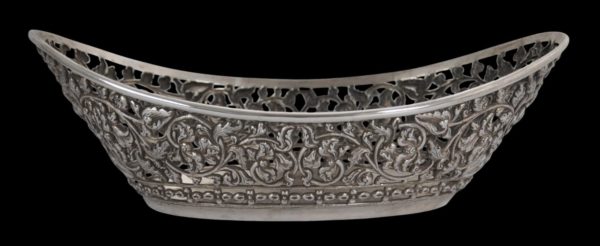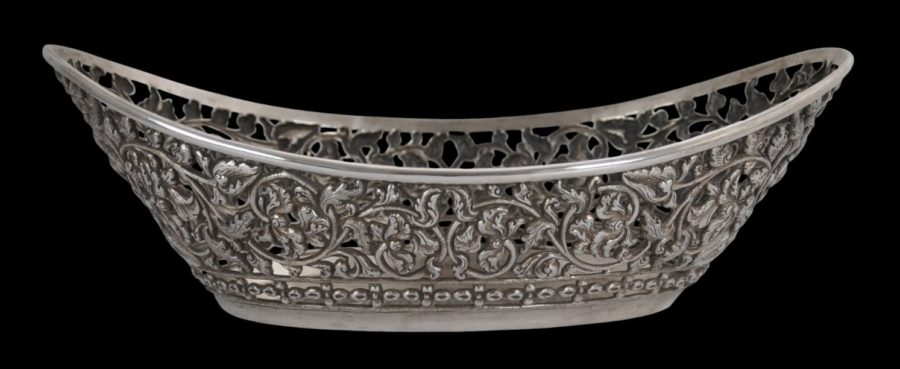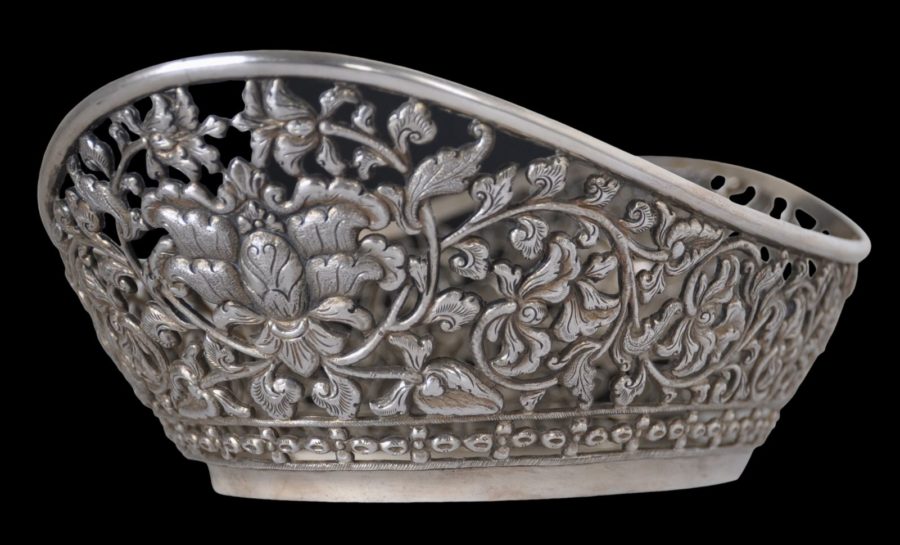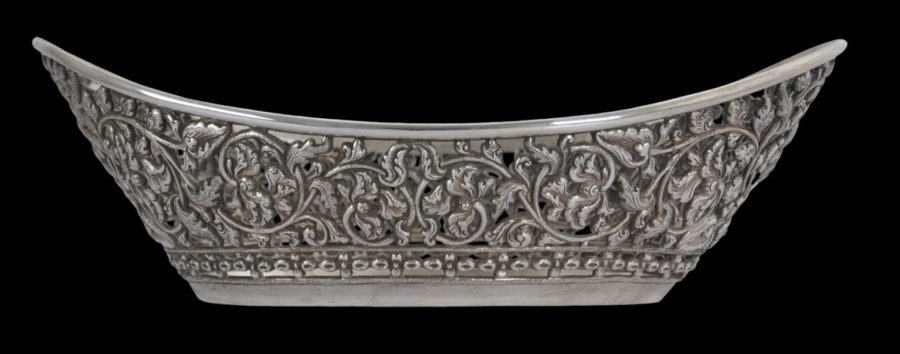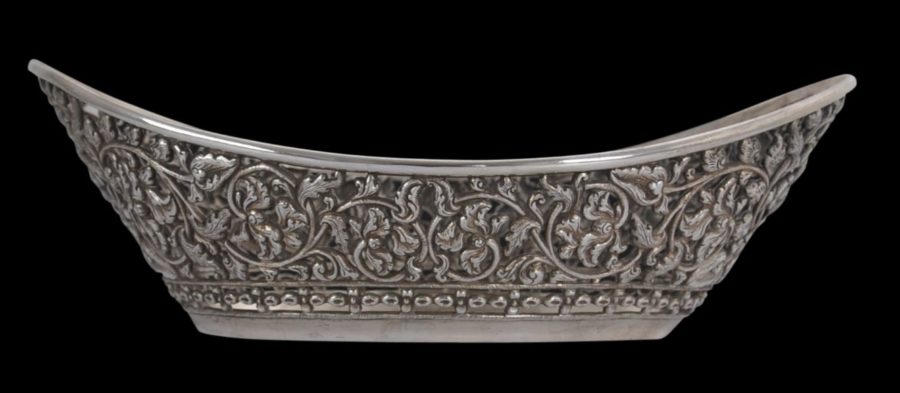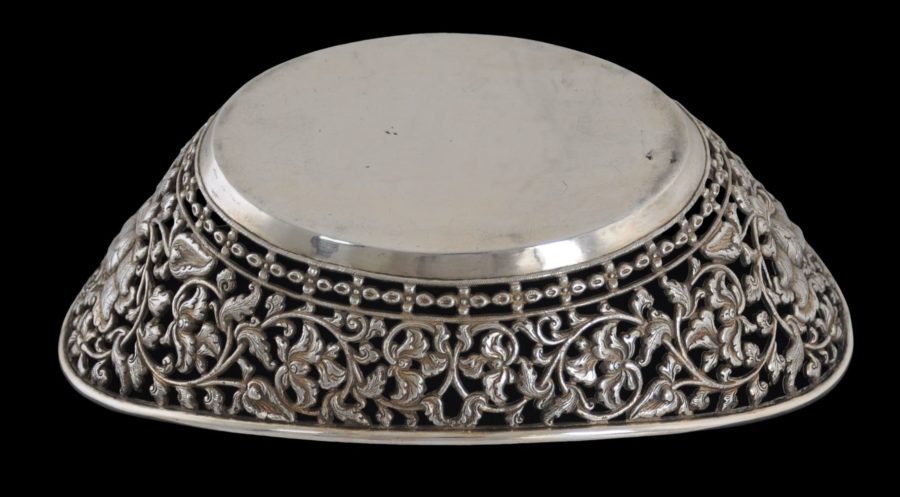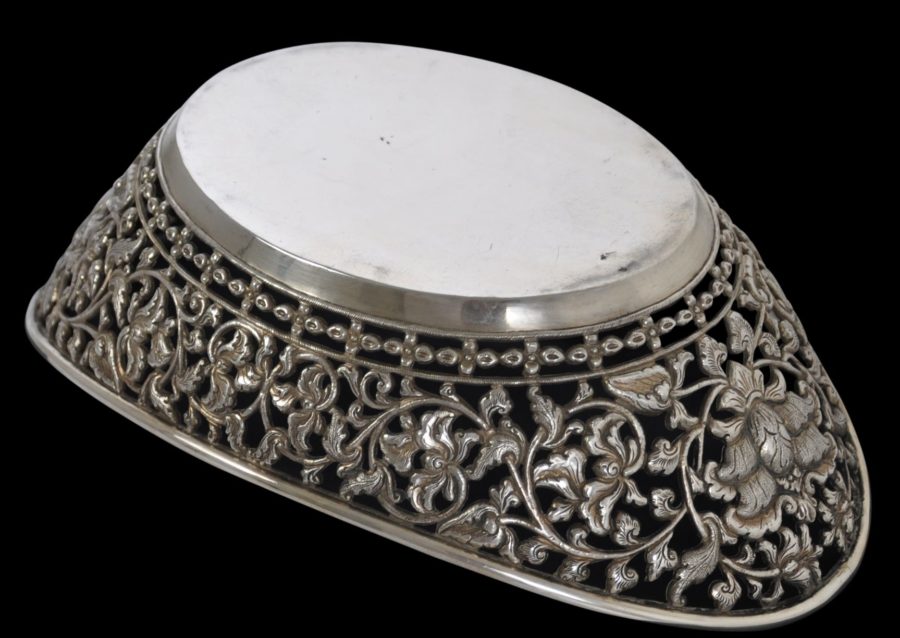Enquiry about object: 5161
Important, Published Yogya Silver Dish or Bonbonniere, Owned by Agnes van Gesseler Verschuir, the Reviver of the Yogya Silver Tradition
Yogyakarta, Central Java, Indonesia circa 1930
length: 22.5cm, width: 14.5cm, height: 7.3cm, weight: 225g
Provenance
Agnes van Gesseler Verschuir, wife of Pieter van Gesseler Verschuir, Colonial Dutch Governor of Yogyakarta (1929-1932), and thence by descent. This item is published in 'Yogya Silver' & exhibited in Amsterdam's Tropenmuseum in 2005.
This dish or bonbonniere is important for its quality but also because it belonged to the wife of a Dutch governor of Yogyakartya, who was instrumental in the revival of silversmithing as a craft in central Java in the first half of the 20th century. It is a fine example of precisely the craft she was helping to revive. In this regard it is somewhat historically important. It has also been exhibited and published – see Kal (2005, p. 118).
This oval, boat shaped dish, is of solid silver that has been pierced and engraved with superbly rendered flowers and scrolling leaf work. The scrollwork seems inspired by the carved stone friezes seen on ancient temples in the area.
The top edge is reinforced and the dish is particularly sturdy.
The dish was acquired from a descendent of Mrs Agnes van Gesseler Verschuir, wife of Pieter Rudolph Wolter van Gesseler Verschuir (1883-1962), Governor of Yogyakarta (1929-1932). Agnes van Gesseler Verschuir played an important role in the revitalisation of the silversmithing industry on Yogyakarta.
Pieter van Gesseler Verschuir, studied at Leiden University. He started his career in 1905 with the General Secretariat of Batavia. Then he became a prospective inspector at the Domestic Board for Java and Madura. In 1906 he became a controller there. Until 1913 he worked in Banjoewangi, Panarukan, Bondowoso and Sumenep. After his leave in the Netherlands, he returned to the Dutch East Indies in 1915 and was appointed Controller in Kuningan. In 1924 he was appointed assistant-resident of Kudus. From 1929 to 1933 he served as governor of Yogyakarta.
Van Gesseler Verschuir married Mary Agnes (Agnes) Pownall in 1908. She was born locally in 1882 in Banjoewangi, and was the daughter of an expatriate head of Telegraaf Maatschappij.
The couple became friends with the Sultan of Yogyakarta. During this time they often received gifts from the Kraton (the palace of the sultan). Agnes’ interest in local silver-smithing was stimulated and she decided to help revive the decaying silver industry of Kota Gede. She encouraged the silversmiths to improve quality, produce more commercially-viable items and introduce more variation in the motifs. In addition to the standard motifs such as the lotus, the double peacock and the garuda, she had photographs and drawings made of temple decorations from which the silversmiths could adopt new motifs. Indeed, the drawings for the ornamentation of this very bowl have been preserved and are illustrated in Kal (2005, p. 77).
She asked the sultan for a piece of land for the construction of a silverware showroom. A store was built on the land for which a symbolic amount of rent was paid, and it was from this initial outlet that Yogyakarta’s silver industry was revived.
The dish here is a fine example of the revitalised silversmithing capabilities encouraged by Agnes van Gesseler Verschuir. It is in excellent condition.
References
Kal, P.W.H., Yogya Silver: Renewal of a Javanese Handicraft, KIT Publishers, 2005.


